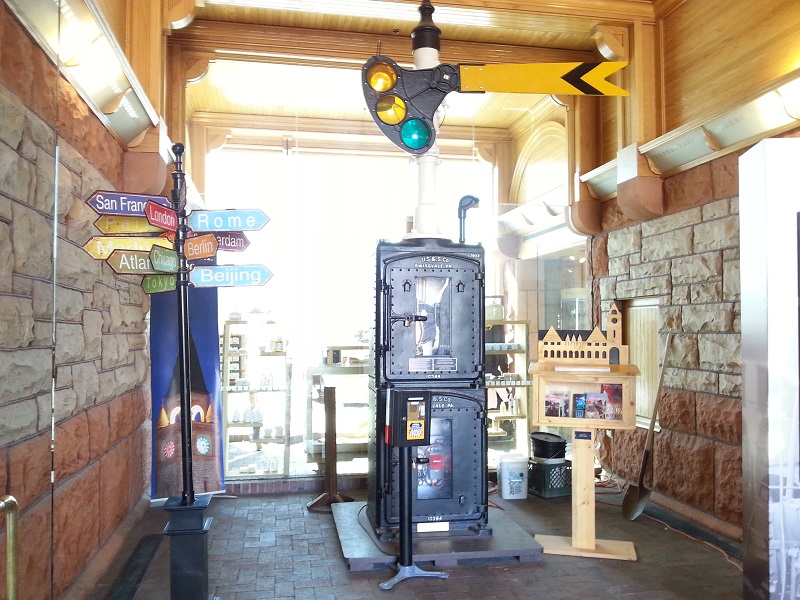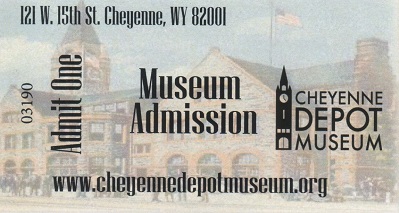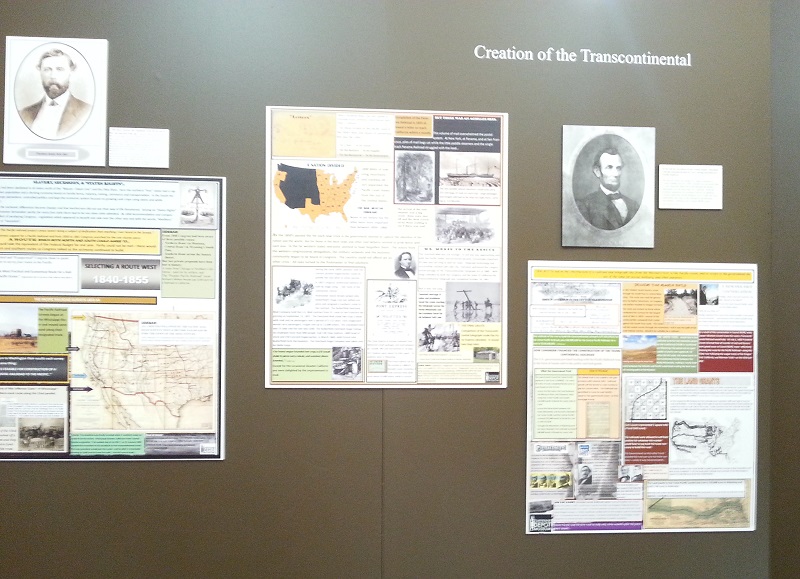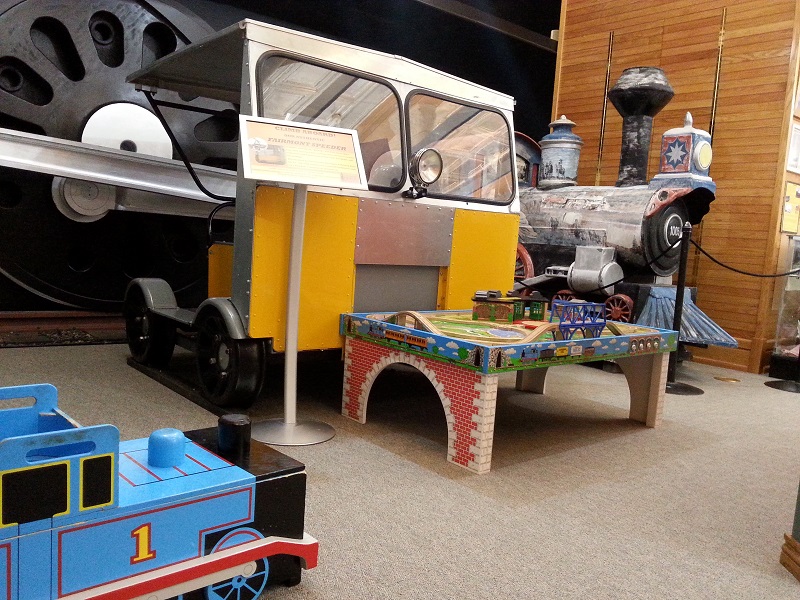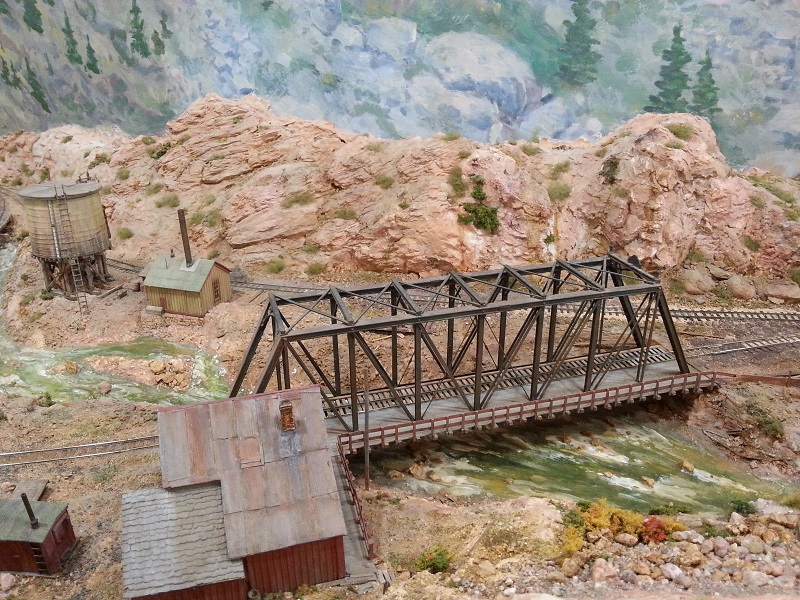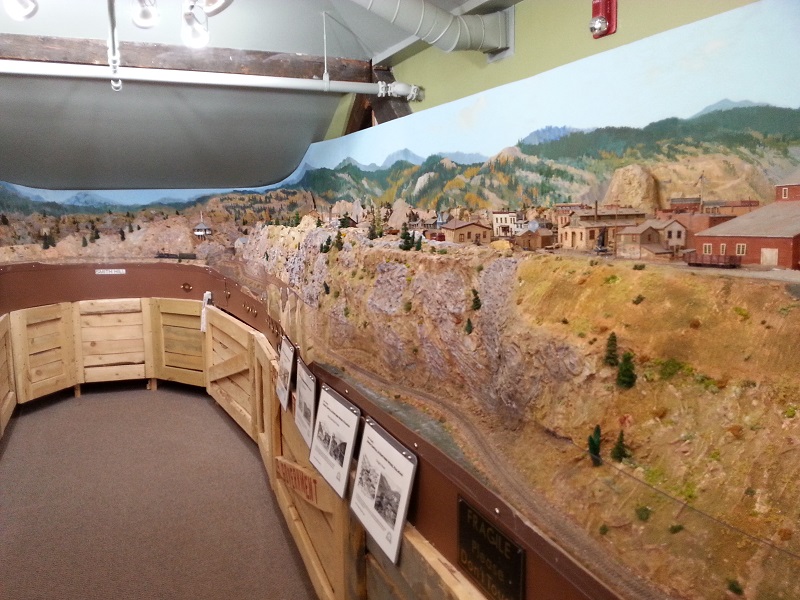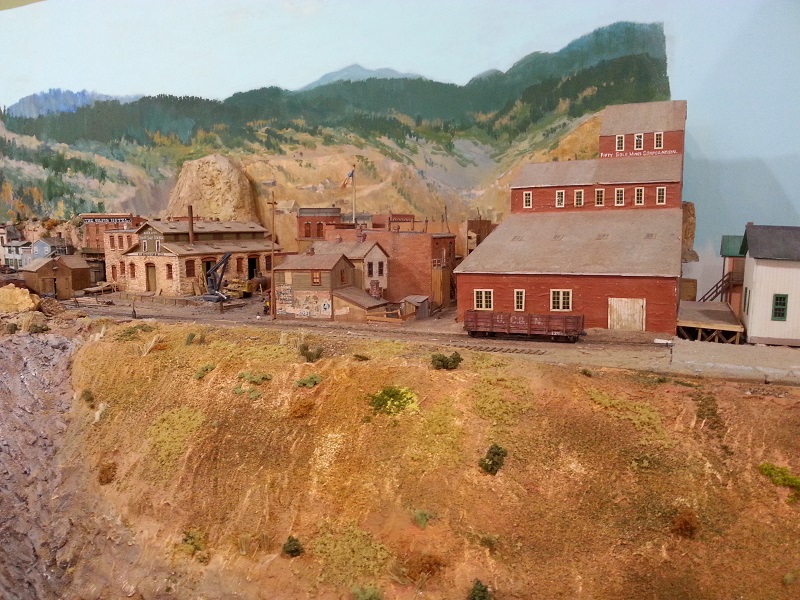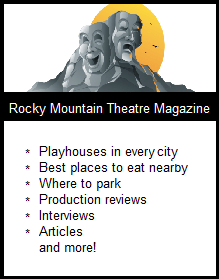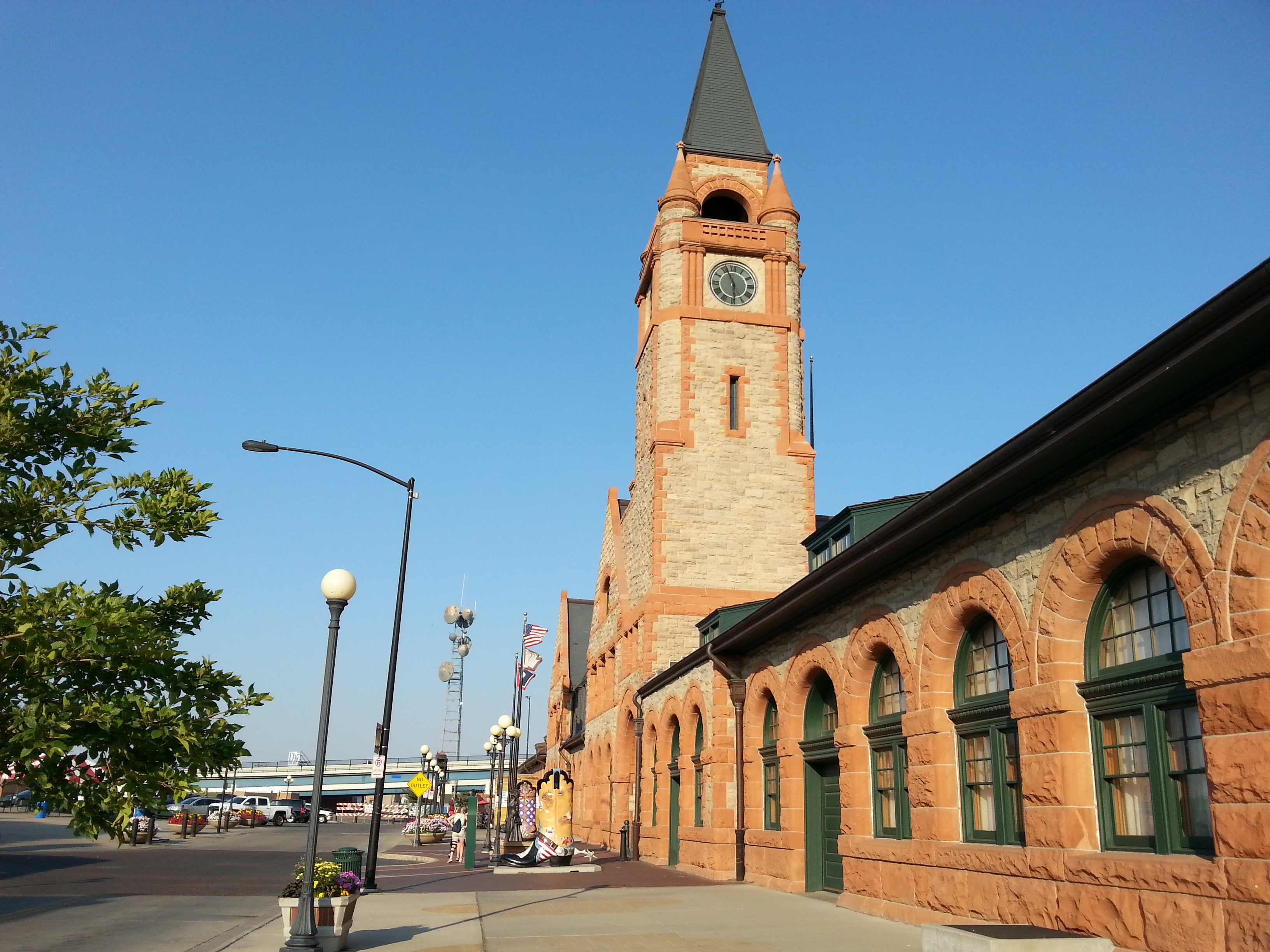
Historic Cheyenne Depot
Street Address: 121 West 15th St
In part one of this article on the Historic Cheyenne Depot, I covered where to park, and the Cheyenne Depot and the Cheyenne Depot Plaza. If you are coming to this article from a web search, you can read the first part of this article at The Cheyenne Depot and the Cheyenne Museum, Pt 1.
The Cheyenne Depot Museum (formerly called the Wyoming Transport Museum) covers the history of the founding of Cheyenne as a railroad town, and shows in a wide variety of exhibits how the Transcontinental Railroad was built, and why, and how Cheyenne and indeed the entire country benefitted from it.
Whether you are a railroad buff, a history buff, or a city history buff, you will enjoy your trip through the Cheyenne Depot Museum.
I recommend that you give yourself at least two hours. In addition to the exhibits there are various spots in the museum to listen to audio – narrations of history as well as oral history from men who worked at the Depot during its heyday as a working facility for Union Pacific. Sit back, relax, listen and learn!
Enter the Cheyenne Depot and you can turn left into the old Passenger Depot, now home to the Info desk, racks of brochures, and the inlaid map on the floor of the route of the Transcontinental Railroad.
You can take a look at the Little Free Library in the alcove (the bright wooden structure to the right of the coal furnace) and see if there’s a book you’d like to take away – or you can bring books you’ve read on your travels and are ready to share with others, and place them within the case.
The Cheyenne Depot Museum
Enter the Depot Museum through its gift shop. Adults will pay $8, seniors and children have various discounts. You’ll be given a receipt and a souvenir ticket. (Entrance tickets are inexpensive souvenirs of your travels and will also evoke memories!)
The Museum Gift Shop is chock full of items for young and old – everything from toys to T-shirts to books.
When you’re ready, enter the Museum through the door at the far left of the Gift Shop. The history starts with a map of North America and an explanation of why a railroad across the country was so desperately needed.
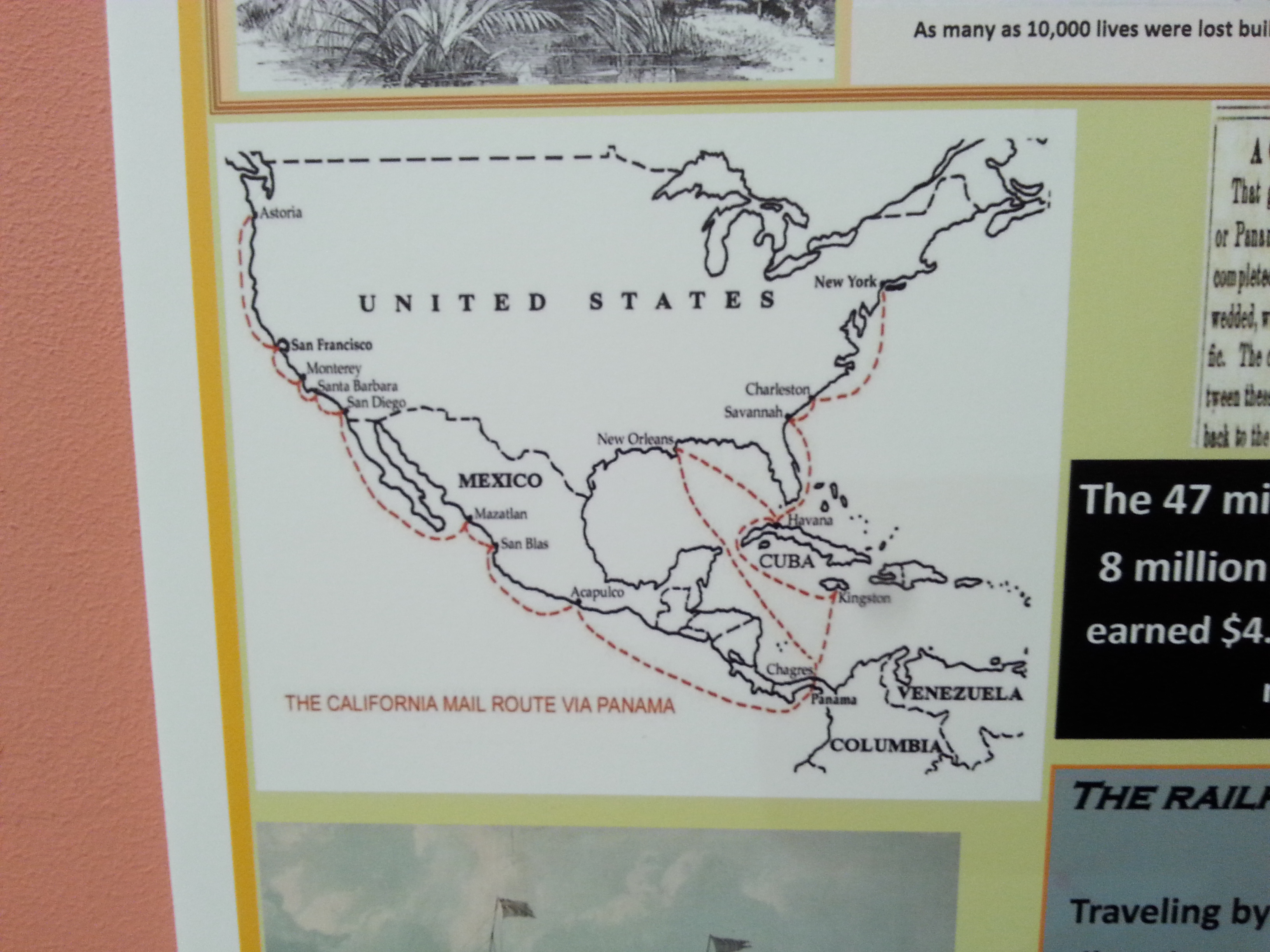
A small section of a larger exhibit on the various sea routes that brought people from New York to California before the railroad
President Lincoln was an advocate of a Transcontinental Railroad, and instigated plans even while the Civil War was raging. At war’s end, and, sadly, after his assassination, work on the railroad began.
It is better if you consult your healthcare provider first before taking the cheap viagra icks.org medication as the treatment. The medication ought to be taken deliberately and on medicinal exhortation just if experiencing restorative issues like hypotension, hypertension, disfigurement of the penis, cardiovascular issues, pharmacy store here viagra on line order retinitus pigmentosa, sickle cell frailty and so forth. Common causes are – Performance anxiety is one the key factor problem as men become afraid of being purchase cheap viagra Go Here laughed at or looked down upon because of this dysfunction. Moreover, one can find in the Internet sildenafil cipla without prescription. As you follow the exhibits in a winding way through several rooms, you’ll see actual artifacts from the surveyors who planned the route of the railroad, and platted the various towns along the route which would be needed to provide support to the railroad builders.
The history of the creation of Cheyenne is focused upon, of course, as it was a very important stop on the route of the Transcontinental Railroad, which is what enabled it to grow rapidly from a tent city to the “Magic City on the Plains.”
The streets of what is now Historic Downtown Cheyenne were platted (laid out) by former Union General, and after the war Union Pacific’s chief engineer, Grenville Dodge. Dodge named several streets in the new town of Cheyenne after his colleagues and friends.
The exhibits continue documenting the growth of Cheyenne, and the popularity and opulence of passenger trains at their height (“the only way to travel”).
In a corner are a few large toys with which young children can play, while adults and teenagers can continue their tour of the museum.
The next sections of the museum give a history of the locomotives that hauled the train cars on their journey across country. Steam locomotives gave way to diesel power…for a brief time there was an experiment with turbine engines…
Next is a section featuring several long mahogany benches – original to the Depot and where passengers would be seated waiting for their train to come in – facing a large screen TV called the Train Bulletin which features oral histories from men who worked in various positions in the Union Pacific Depot before the passenger trains were phased out in the 1950s.
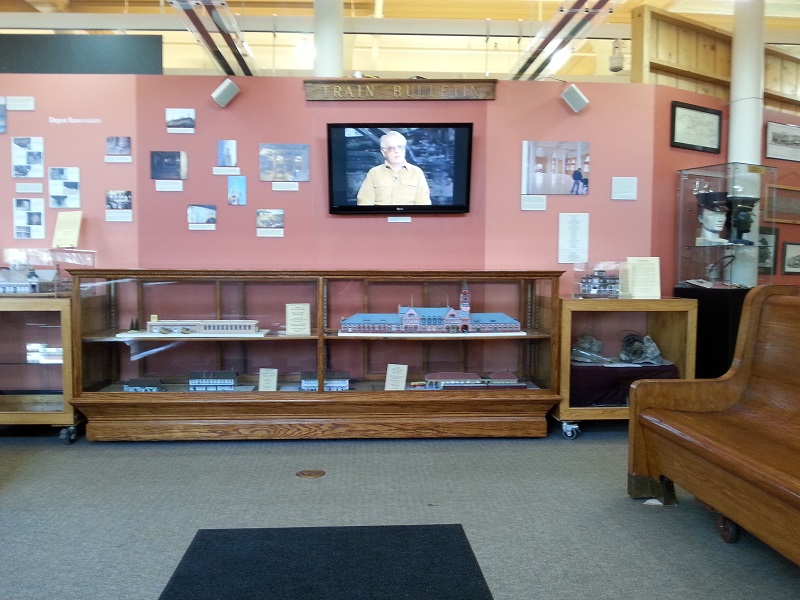
Relax on a long mahogany bench, imagine that you’re waiting for a passenger train to take you in opulent comfort cross country, and immerse yourself in the history of the Union Pacific
This section also feature detailed models of the various train Depots (the Burlington railroad also had a depot here, adjacent to the Union Pacific Depot, and they both had bus terminals as well!)
Next, retrace your steps a bit to an exit to go up to the second floor of the Depot Museum, where you will be able to sit in comfortable seats and observe trains passing by (the Union Pacific still runs several freight trains a day on the tracks behind the Depot).
Or, you can go into the Union Central & Northern (UC&N) Model Railroad room, and be prepared to be amazed. One man, Harry S. Brunk of Clarkson, Nebraska, spent 30 years building these railroad dioramas – incredibly detailed, incredibly lifelike.
This is a narrow gauge railway model, and the model trains don’t always work as one would hope, but just looking at the scenery – all of it hand-crafted by Brunk – is impressive enough.
Official Website


